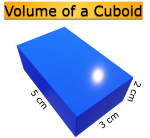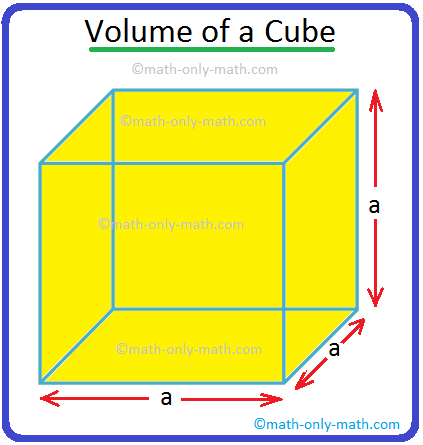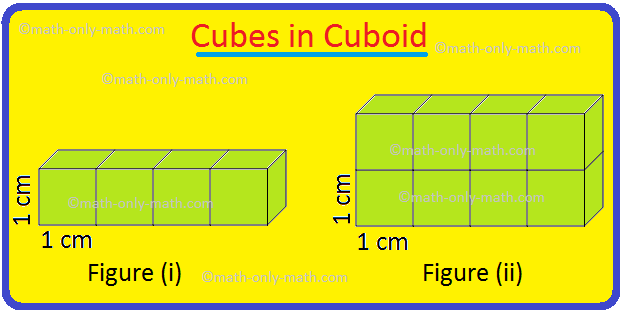Subscribe to our ▶️ YouTube channel 🔴 for the latest videos, updates, and tips.
Home | About Us | Contact Us | Privacy | Math Blog
Relation between Arithmetic Means and Geometric Means
We will discuss here about some of the important relation between Arithmetic Means and Geometric Means.
The following properties are:
Property I: The Arithmetic Means of two positive numbers can never be less than their Geometric Mean.
Proof:
Let A and G be the Arithmetic Means and Geometric Means respectively of two positive numbers m and n.
Then, we have A = m + n/2 and G = ±√mn
Since, m and n are positive numbers, hence it is evident that A > G when G = -√mn. Therefore, we are to show A ≥ G when G = √mn.
We have, A - G = m + n/2 - √mn = m + n - 2√mn/2
A - G = ½[(√m - √n)^2] ≥ 0
Therefore, A - G ≥ 0 or, A ≥ G.
Hence, the Arithmetic Mean of two positive numbers can never be less than their Geometric Means. (Proved).
Property II: If A be the Arithmetic Means and G be the Geometric Means between two positive numbers m and n, then the quadratic equation whose roots are m, n is x^2 - 2Ax + G^2 = 0.
Proof:
Since, A and G be the Arithmetic Means and Geometric Means respectively of two positive numbers m and n then, we have
A = m + n/2 and G = √mn.
The equation having m, n as its roots is
x^2 - x(m + n) + nm = 0
⇒ x^2 - 2Ax + G^2 = 0, [Since, A = m + n/2 and G = √nm]
Property III: If A be the Arithmetic Means and G be the Geometric Means between two positive numbers, then the numbers are A ± √A^2 - G^2.
Proof:
Since, A and G be the Arithmetic Means and Geometric Means respectively then, the equation having its roots as the given numbers is
x^2 - 2Ax + G^2 = 0
⇒ x = 2A ± √4A^2 - 4G^2/2
⇒ x = A ± √A^2 - G^2
Property IV: If the Arithmetic Mean of two numbers x and y is to their Geometric Mean as p : q, then, x : y = (p + √(p^2 - q^2) : (p - √(p^2 - q^2).
Solved examples on the properties of Arithmetic and Geometric Means between two given quantities:
1. The Arithmetic and Geometric Means of two positive numbers are 15 and 9 respectively. Find the numbers.
Solution:
Let the two positive numbers be x and y. Then according to the problem,
x + y/2 = 15
or, x + y = 30 .................. (i)
and √xy = 9
or xy = 81
Now, (x - y)^2 = (x + y)^2 - 4xy = (30)^2 - 4 * 81 = 576 = (24)^2
Therefore, x - y = ± 24 .................. (ii)
Solving (ii) and (iii), we get,
2x = 54 or 2x = 6
x = 27 or x = 3
When x = 27 then y = 30 - x = 30 - 27 = 3
and when x = 27 then y = 30 - x = 30 - 3 = 27
Therefore, the required numbers are 27 and 3.
2. Find two positive numbers whose Arithmetic Means increased by 2 than Geometric Means and their difference is 12.
Solution:
Let the two numbers be m and n. Then,
m - n = 12 ........................ (i)
It is given that AM - GM = 2
⇒ m + n/2 - √mn = 2
⇒ m + n - √mn = 4
⇒ (√m - √n^2 = 4
⇒ √m - √n = ±2 ........................ (ii)
Now, m - n = 12
⇒ (√m + √n)(√m - √n) = 12
⇒ (√m + √n)(±2) = 12 ........................ (iii)
⇒ √m + √n = ± 6, [using (ii)]
Solving (ii) and (iii), we get m = 16, n = 4
Hence, the required numbers are 16 and 4.
3. If 34 and 16 are the Arithmetic Means and Geometric Means of two positive numbers respectively. Find the numbers.
Solution:
Let the two numbers be m and n. Then
Arithmetic Mean = 34
⇒ m + n/2 = 34
⇒ m + n = 68
And
Geometric Mean = 16
√mn = 16
⇒ mn = 256 ............................... (i)
Therefore, (m - n)^2 = (m + n)^2 - 4mn
⇒ (m – n)^2 = (68)^2 - 4 × 256 = 3600
⇒ m - n = 60............................... (ii)
On solving (i) and (ii), we get m = 64 and n = 4.
Hence, the required numbers are 64 and 4.
● Geometric Progression
- Definition of Geometric Progression
- General Form and General Term of a Geometric Progression
- Sum of n terms of a Geometric Progression
- Definition of Geometric Mean
- Position of a term in a Geometric Progression
- Selection of Terms in Geometric Progression
- Sum of an infinite Geometric Progression
- Geometric Progression Formulae
- Properties of Geometric Progression
- Relation between Arithmetic Means and Geometric Means
- Problems on Geometric Progression
From Relation between Arithmetic Means and Geometric Means to HOME PAGE
Didn't find what you were looking for? Or want to know more information about Math Only Math. Use this Google Search to find what you need.
Recent Articles
-
Worksheet on Area, Perimeter and Volume | Square, Rectangle, Cube,Cubo
Jul 25, 25 12:21 PM
In this worksheet on area perimeter and volume you will get different types of questions on find the perimeter of a rectangle, find the perimeter of a square, find the area of a rectangle, find the ar… -
Worksheet on Volume of a Cube and Cuboid |The Volume of a RectangleBox
Jul 25, 25 03:15 AM
We will practice the questions given in the worksheet on volume of a cube and cuboid. We know the volume of an object is the amount of space occupied by the object.1. Fill in the blanks: -
Volume of a Cuboid | Volume of Cuboid Formula | How to Find the Volume
Jul 24, 25 03:46 PM
Cuboid is a solid box whose every surface is a rectangle of same area or different areas. A cuboid will have a length, breadth and height. Hence we can conclude that volume is 3 dimensional. To measur… -
Volume of a Cube | How to Calculate the Volume of a Cube? | Examples
Jul 23, 25 11:37 AM
A cube is a solid box whose every surface is a square of same area. Take an empty box with open top in the shape of a cube whose each edge is 2 cm. Now fit cubes of edges 1 cm in it. From the figure i… -
5th Grade Volume | Units of Volume | Measurement of Volume|Cubic Units
Jul 20, 25 10:22 AM
Volume is the amount of space enclosed by an object or shape, how much 3-dimensional space (length, height, and width) it occupies. A flat shape like triangle, square and rectangle occupies surface on…





New! Comments
Have your say about what you just read! Leave me a comment in the box below. Ask a Question or Answer a Question.